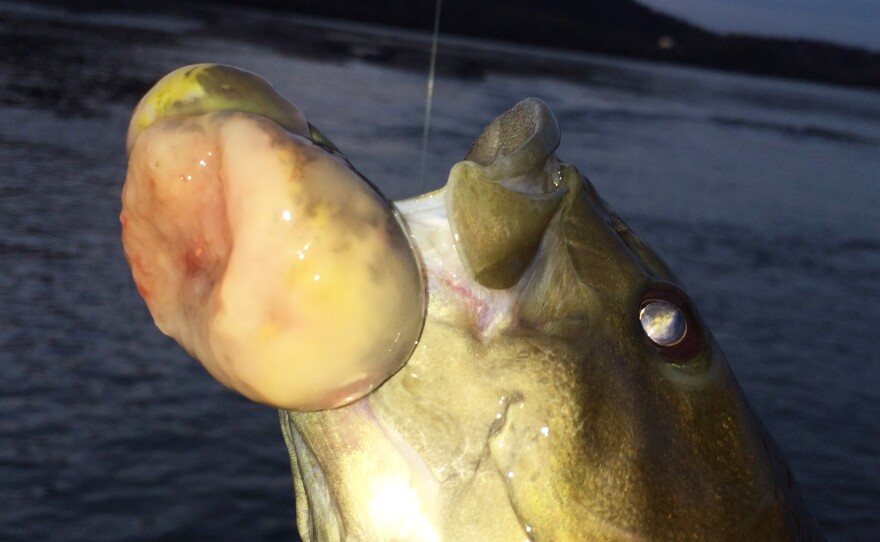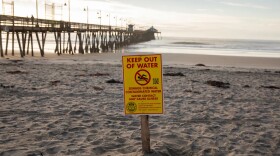Late last year, an angler caught a smallmouth bass in the Susquehanna River near Duncannon, Pa. That fish, officials from the Pennsylvania Fish & Boat Commission said this week, had a malignant tumor. It's the first time this type of tumor has been found on a smallmouth bass in the river, the agency says.
Cancerous growths and tumors on fish are "very, very infrequent," John Arway, the agency's executive director, said in an interview.
"These cancers are initiated by contaminants," he said.
Scientists with the state's Department of Health say there is no evidence that carcinomas in fish present a health hazard to humans, but "people should avoid consuming fish that have visible signs of sores and lesions."
Catch-and-release regulations for smallmouth bass are already in place for the portion of the river where the fish with cancer was caught.
The state of the fish in the river could point to broader concerns over the health of the more than 400-mile-long Susquehanna, the longest river on the East Coast. Intersex fish — male fish that carry eggs — have also been found in the river.
In 2005, scientists began noticing young bass in the river with sores and lesions, leading to increased mortality rates.
"The weight-of-evidence continues to build a case that we need to take some action on behalf of the fish," Arway said in a statement on his agency's website.
Since 2010, Arway told NPR, the agency has asked the state to put the Susquehanna on a list of impaired waterways, a move that would pave the way for a restoration plan for the river.
"The state still doesn't think it has that information," he said.
The state's Department of Environmental Protection is expected to release its 2016 list in September. Arway says he hopes the Susquehanna makes it on the list.
"We are urging them once again," he said in the statement, "to follow the science and add the Susquehanna River to the list."
The folks over at PennLive.com have been covering the Susquehanna and its smallmouth bass fishery since 2009. For more, please go here.
Copyright 2015 NPR. To see more, visit http://www.npr.org/.






